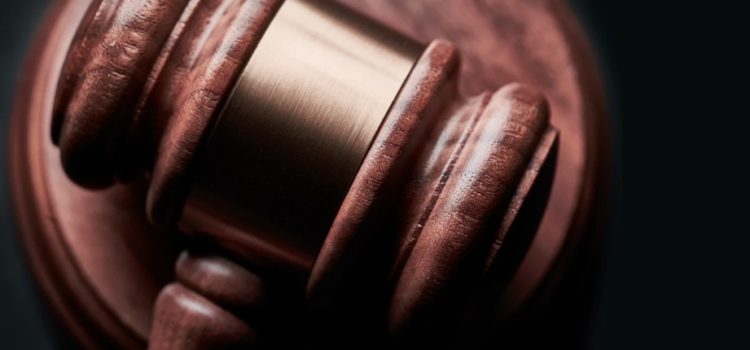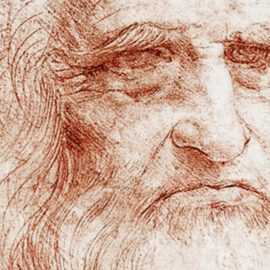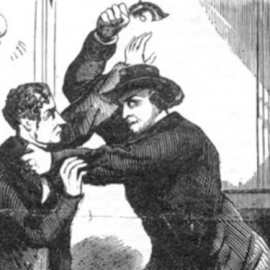

This article is an excerpt from the Shortform book guide to "The Autobiography of Malcolm X" by Malcolm X and Alex Haley. Shortform has the world's best summaries and analyses of books you should be reading.
Like this article? Sign up for a free trial here.
When did Malcolm X start breaking the law, and why? What kind of crimes did he commit?
Malcolm X had a rough introduction to the world. He felt the pressure of society pushing him down, and he fought back by doing what he thought he needed to do to survive. When he was a kid, he stole food to eat. As he entered adulthood, he got busted for his involvement in a burglary ring.
Read more to learn about Malcolm X’s criminal activities as chronicled in his autobiography.
Stealing Food & Getting Into Trouble at School
Malcolm X explains that he was born Malcolm Little on May 19, 1925, in Omaha, Nebraska. From the time he was born, his family was constantly being threatened by racists, in part because his father, Earl Little, was associated with Marcus Garvey’s Back-to-Africa movement. As a result, the family moved often; eventually, they settled in Lansing, Michigan.
When Malcolm X was six, his father died, and the family suffered tremendously because Little had been the sole breadwinner and the Great Depression was on. The family received some welfare and Malcolm X’s mother, Louise Little, tried to work, but the racism she encountered made it hard for her to keep a job. Malcolm X’s crimes began at this point when he started stealing food.
(Shortform note: It’s relatively common for food insecurity to lead to theft. Research indicates that children may even resort to other crimes and hazardous behaviors, like selling drugs or having sex for money, to feed themselves when necessary.)
Under incredible strain trying to keep the family together, Malcolm X’s mother struggled with her mental health and eventually became incapable of caring for her children. The state removed them and committed her to a psychiatric hospital. For a while, Malcolm X lived with a family he knew, but, after he got into some trouble at school, he was expelled and sent to live at a juvenile detention facility.
(Shortform note: Some historians argue that Black children have been treated inequitably in the juvenile justice system since its inception in the 19th century—a trend that continues to this day. In the South in the 19th century, Black youth were excluded from the juvenile system and incarcerated in adult institutions instead; in the North, they were disproportionately represented within the juvenile system, and institutions for Black children were more poorly resourced than those for white children. Black children were also (and often continue to be) treated inequitably in schools: For example, teachers expect them to achieve less and they’re more likely to be punished with suspension or expulsion—which raises their chance of entering the juvenile justice system.)
Choosing Boston’s Ghetto
By this time, Malcolm X had already met his older half-sister Ella and stayed a summer with her in Roxbury (a neighborhood of Boston). This stay had a huge impact on him because Roxbury was a thriving Black cultural center. After eighth grade, he moved to Boston to live with her.
Ella encouraged Malcolm X to get to know the nice parts and people of Roxbury, but he was drawn to the ghetto. In the ghetto, he befriended a man named Shorty and eventually moved in with him. He explains that hanging out with Shorty and his friends changed him in a few ways: He started to gamble, drink, and smoke cigarettes and marijuana. He also learned how to dress and talk as they did in the city.
Hustling in Harlem
At 17, Malcolm X moved to Harlem to work at a nightclub called Small’s Paradise. He learned about the rules of hustling—making money through illicit means—from his customers, especially those few who were involved in the underground crime scene. Malcolm X explains that the criminals he knew became criminals because white society deprived them of the opportunity to fulfill their true potential—they turned to crime in order to survive, and they did drugs to help them deal with the pressure.
Malcolm X, too, would start committing crimes and doing drugs to get from day to day. For example, he says that he sold marijuana, got involved in the illegal gambling scene, and started doing cocaine so that he could steel himself for robbery. Over time, this began to catch up to him—he felt emotionally lifeless, and the drugs were making him sick. After an altercation with another hustler almost ended in violence and led him to go on a multi-drug-fueled bender, Shorty took him back to Boston.
Busted in Boston
After returning to Boston, Malcolm X decided to start a burglary ring involving Shorty, their friend Rudy, Malcolm X’s girlfriend Sophia, and her sister. Eventually, they were caught, and Malcolm X was sentenced to eight to 10 years in prison at the age of 20, despite the average sentence for first-time burglary convictions being only two years.
(Shortform note: Burglary is often confused with similar crimes, like larceny (also known as theft) and robbery. Burglary refers to the act of illegally entering a building to perpetrate a crime. In contrast, larceny or theft is the act of taking someone else’s property, and robbery is a form of theft that’s accomplished by means of violence. According to the US Department of Justice, most people who are convicted of burglary—as Malcolm X was—are motivated to burgle because they need to fund their continued drug use. This is another vicious cycle: Committing a crime has been shown to increase anxiety and depression in boys, and stress has been shown to fuel drug use—a habit that may require further criminal exploits.)

———End of Preview———
Like what you just read? Read the rest of the world's best book summary and analysis of Malcolm X and Alex Haley's "The Autobiography of Malcolm X" at Shortform.
Here's what you'll find in our full The Autobiography of Malcolm X summary:
- Malcolm X explains why he believed what he believed
- The historical and sociological context surrounding Malcolm X’s life
- Why Malcolm X was such a controversial figure






